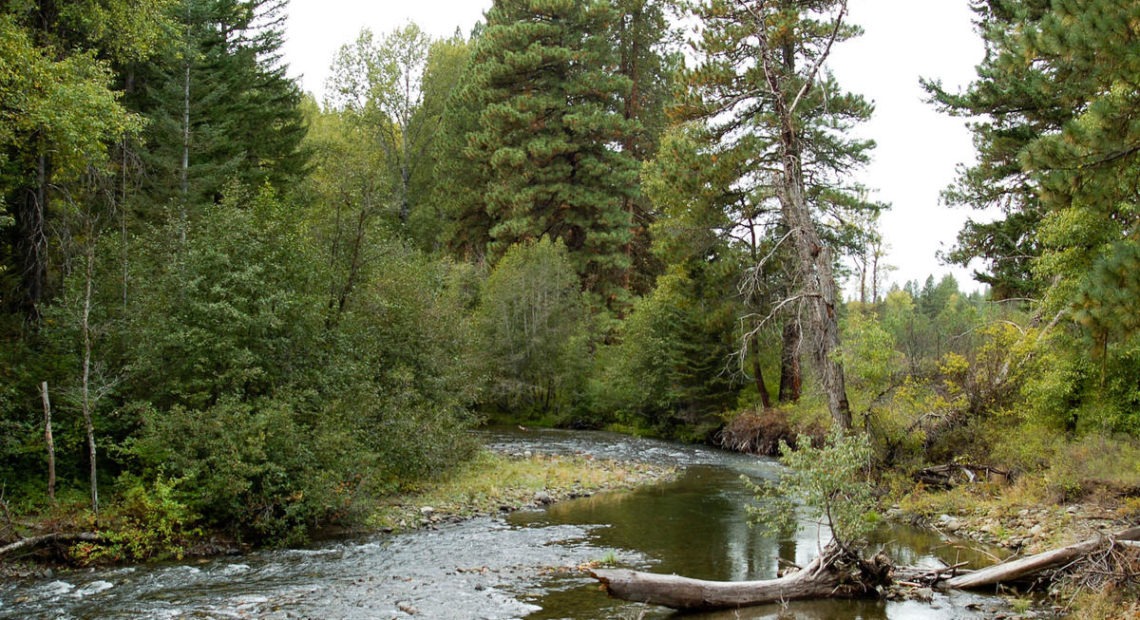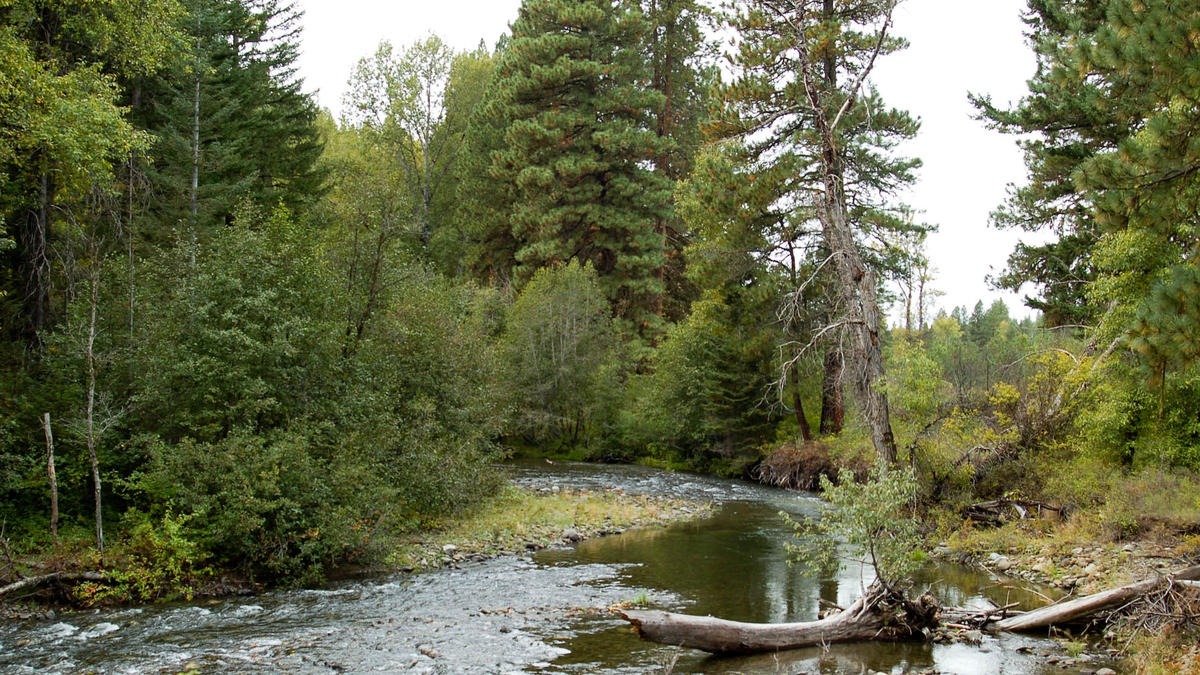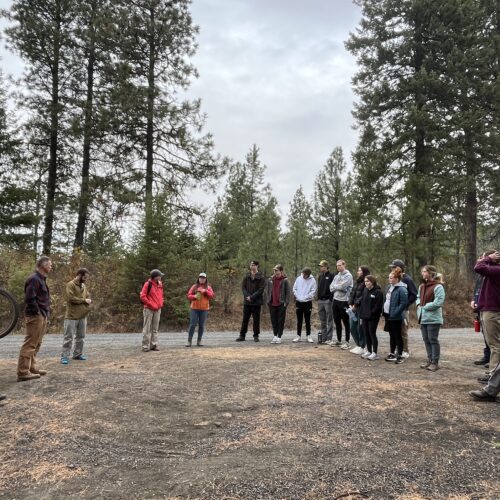
A Land Deal To Conserve Water, Wildlife
Listen
The Teanaway River winds around the eastern slope of Washington’s Cascade Mountains. For years, conservation groups tried to protect the area – with no success. Now, a coalition has purchased the land in one of the largest acquisitions in Washington’s history.
If you look up the North Fork of central Washington’s Teanaway River, you can see snowcapped Mount Stuart in the distance. This area outside Cle Elum is a popular destination for hikers and fishers. And it’s home to wildlife including a wolf pack, spotted owls, and moose. Jeff Tayer is with the Washington Department of Fish and Wildlife. Tayer is helping guide a tour along the Teanaway riverbanks.
Tayer: “The Teanaway River is the most important tributary in the Yakima Basin for both protection – in other words protecting existing functioning habitat – and restoration.”
The Teanaway River splits into three forks. Each one snakes its way through ponderosa pines. Some areas have been logged. Others look untouched. Near the West Fork, the land flattens out. Conservationists worried this area would be developed one day. That would alter the landscape and drain the watershed. For years, groups have been trying to buy up tracts of land to conserve the Teanaway. That approach wasn’t working at all. So when the Yakama Nation Indian tribe and farmers proposed a plan to provide more water for fish and irrigation, environmental groups stepped in. They asked to purchase 50-thousand acres of the Teanaway watershed as a part of the plan.
Garrity: “To show that right out of the gate that there would be overwhelming landscape, terrestrial benefits, as well as the river and salmon benefits that were clear in the plan in the first place.”
That’s Michael Garrity with American Rivers. He says the Teanaway is Washington’s largest land acquisition in 45 years. The acquisition cost about 100 million dollars. Garrity says the Yakima Basin plan demonstrates how traditionally unfriendly groups can work together. But the plan isn’t without controversy. The state legislature this year agreed to fund half of the estimated 4 billion dollar plan. The other half would come from federal and private sources. Reuven Carlyle is the chairman of the state House Finance Committee. He recently sent a letter to Governor Jay Inslee expressing concern that federal funding wouldn’t come through. The project would also enlarge a reservoir at Bumping Lake in central Washington. Chris Maykut is organizing the lake’s cabin owners and recreationalists to fight the expansion. Decades ago families built cabins on Forest Service land. These lake front cabins would be flooded if Bumping Lake is enlarged for more water storage. Maykut says he’s glad the Teanaway will be conserved. But he thinks – for environmental groups – conserving more water would be a better solution than supporting more dams.
Maykut: “You’re saying, ‘I support building the massive, wasteful, destructive storage dams in the hope that we’ll get more salmon out of the deal.’”
Environmental groups say they will get more salmon out of the Teanaway purchase. They think this area could turn into the largest sockeye salmon run in the lower 48 states. William Meyer is with the Department of Fish and Wildlife. He says historically, the Teanaway watershed has been home to now-endangered salmon, bull trout and steelhead. Meyer says the department will restore streams and create better habitat for fish.
Meyer: “You don’t get a large salmon returning unless you grow up a small salmon. This place here is about 450 to 500 miles and through nine dams to come back here as a salmon.”
Both the state Departments of Fish and Wildlife and Natural Resources will manage the Teanaway together. Fish and Wildlife’s Jeff Tayer says conservation groups, farmers, and the Yakama Nation all have a lot at stake with the Yakima Basin plan. Conserving the Teanaway is one step forward.
Tayer: “If you’re going to protect the water supply, you have to protect the watershed. In order to protect the watershed, you have to protect the land around it.”
Tayer hopes that by protecting the Teanaway’s land, they can conserve it for fish and recreationalists for years to come.
Copyright 2013 Northwest Public Radio
Related Stories:

Galardonado actor Adam Beach visita Toppenish
Noviembre es el Mes de la Herencia Nativa Americana. En el centro de Washington, diferentes actos celebran a estas comunidades. El viernes 22 de noviembre, Heritage University recibirá en Toppenish al galardonado actor Adam Beach.

Award-winning actor Adam Beach visits Toppenish
November is Native American Heritage Month. In central Washington, different events celebrate these communities. On Friday, Nov. 22, Heritage University will host the award-winning actor Adam Beach in Toppenish His visit is closing out the university’s events recognizing the Native American communities’ contributions.

Tacoma City Council moves forward with zoning changes
The next phase of Tacoma’s attempts to address housing shortages will soon be implemented, as the Tacoma City Council has voted unanimously to adopt the second phase of the Home in Tacoma zoning package.
The package of changes to city zoning standards aims to create more opportunities for different types of housing across the city, including by allowing more units to be developed on a standard city lot.













